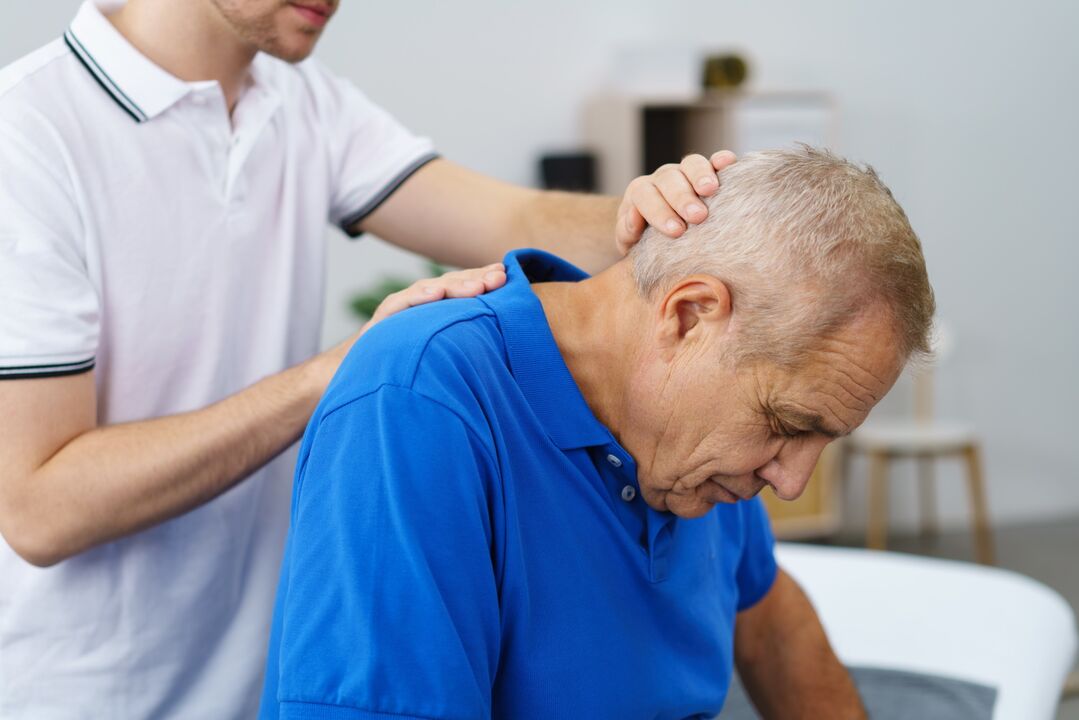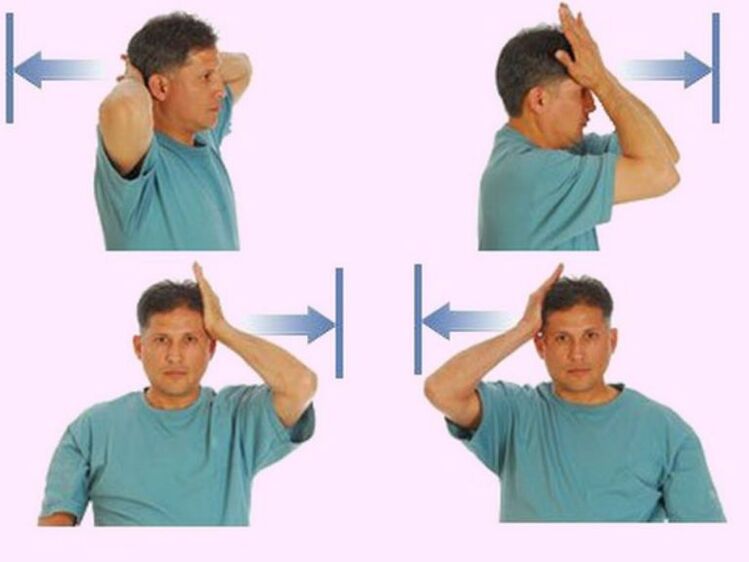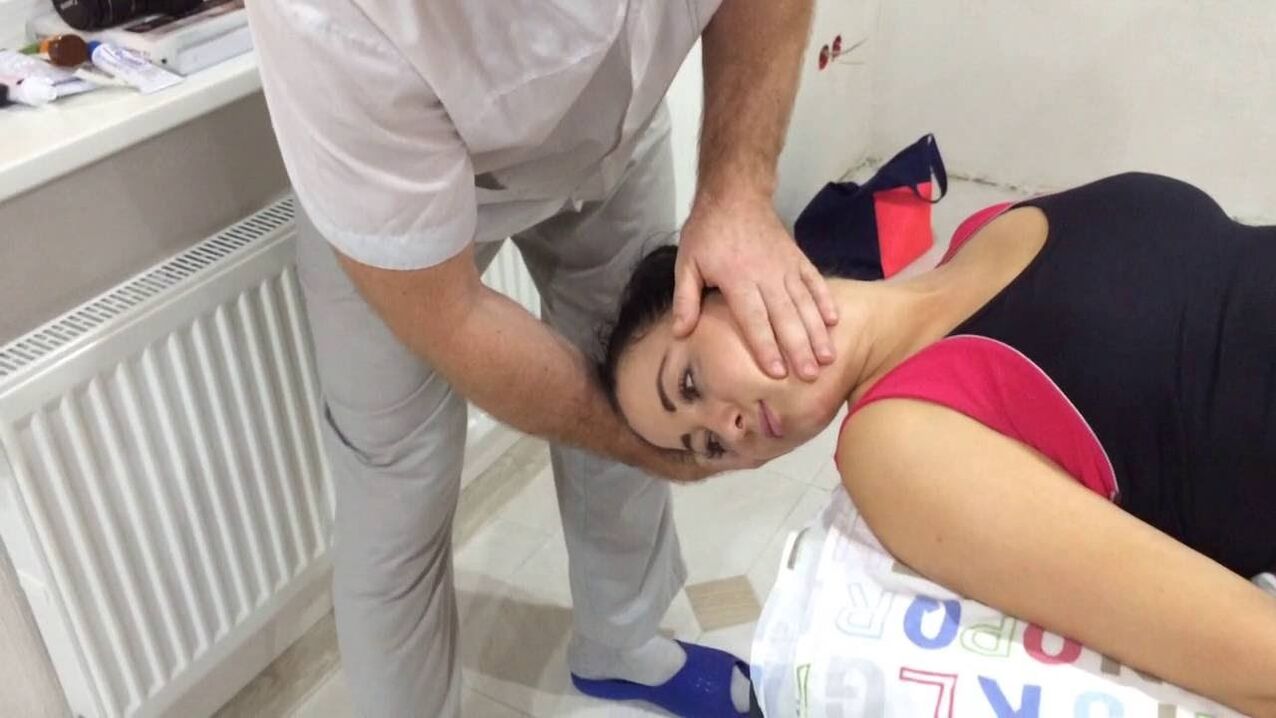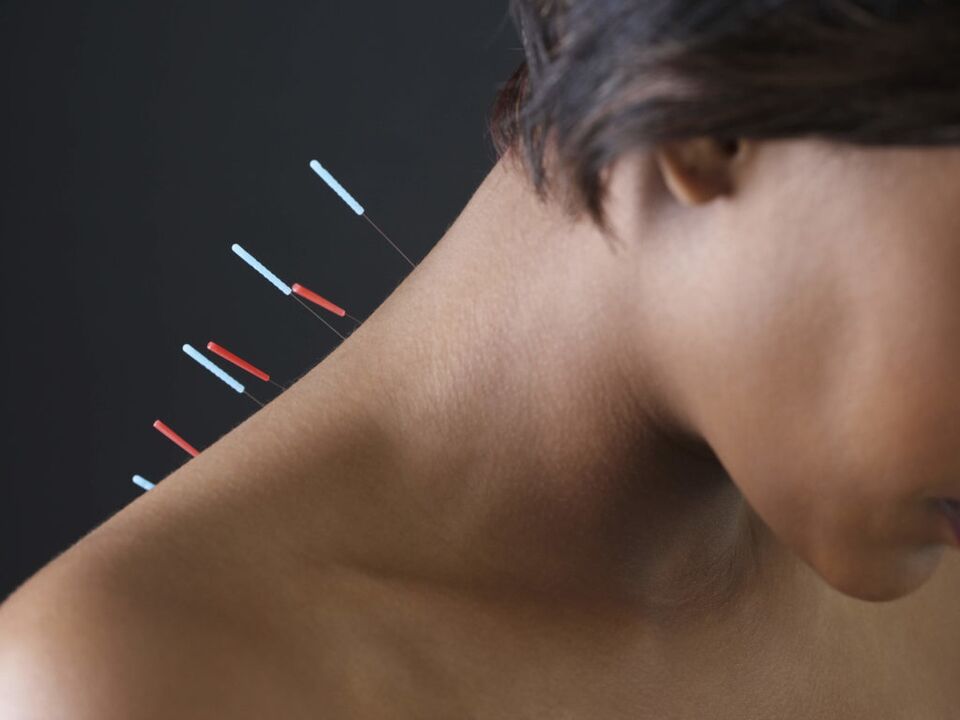
Osteochondrosis of the cervical spine is a pathological process in which the nutrition of the vertebral discs is disturbed, causing their gradual damage. As the disease progresses, the intervertebral discs lose their shape and stop performing their main functions. The ability of the spine to withstand physical stress is lost.
Treatment methods
Effective treatment of cervical osteochondrosis consists of an integrated approach to the disease, combining drug therapy and physiotherapy. If these methods do not give positive results, they resort to surgical intervention.
Conservative treatment consists of taking non-steroidal anti-inflammatory drugs, vitamins, and muscle relaxants. The former are designed to reduce inflammation and pain. If the pain is mild, topical ointments or gels will help. The use of vitamins helps to improve blood circulation, which leads to better nutrition of the brain.
However, if the cause of osteochondrosis lies in a person's lifestyle and remains unchanged, any medicine will not be enough. If the disease is caused by constant work at the computer, it is necessary to include some physical exercises in the work rhythm to warm up the neck.
Physiotherapy methods give good results:
- electrophoresis;
- water procedures;
- massage;
- physiotherapy.

Significantly relieve anxiety with hirudotherapy and manual therapy.
As a preventive measure during sedentary work, periodic self-massage is recommended to disperse stagnant blood and ensure the flow of nutrients to the brain. In addition, you should eat regularly, get enough rest at night and control your weight.
Osteochondrosis of the cervical spine is well corrected in the initial stages, before the onset of vertebral artery syndrome and cardialgia.
Treatment aims to relieve pain, restore blood supply to the brain and slow down the progression of the disease. The patient is being treated by a neurologist. Conservative therapy is as follows:
- Applicationnon-steroidal anti-inflammatory drugslocal and systemic. Ointments, gels, tablets and injections cope well with pain in osteochondrosis.
- It is used in the acute stage of the disease accompanied by severe painparavertebral block- local application of drugs (anesthetics and corticosteroids).
- Drug treatment includes non-steroidal anti-inflammatory drugs, antispasmodics,analgesics and B group vitamin complexes.
- Tranquilizers can be prescribed with severe pain affecting the patient's nervous and mental state. With long-term pain (more than 4 weeks), they are replacedantidepressants. These drugs allow to stabilize the mental state of the patient.
- In the acute phase, it can be used to reduce nerve root compressionmuscle relaxants.
- It is prescribed to maintain cerebral circulationvasodilators, as well as means to improve metabolism in nervous tissue).
With the ineffectiveness of conservative treatment for several months and the progression of the disease, they sometimes resort to surgical intervention.
Medical therapy
Drug treatment of osteochondrosis of the cervical spine involves the use of various drugs.
NSAIDs (NSAIDs)
Non-steroidal anti-inflammatory drugs (medications) are used as symptomatic treatment, to eliminate inflammation and relieve pain during exacerbation of the disease.
The course of taking NSAIDs for osteochondrosis of the cervical spine usually does not exceed 6 weeks. Medicines have only a symptomatic effect, and the pain may return after the end of the course. Often, NSAIDs are used together with antispasmodics, which help relieve muscle tension in the paravertebral zone.
Anesthetics
Pain and muscle tension are effectively relieved by the application of local anesthetics. Blockades are widely used in the combination of anesthetics with anti-inflammatory effects in addition to the analgesic effect with corticosteroid drugs.
As a local anesthetic, a solution containing substances that stop the flow of impulses in irritated nerve endings and prevent their passage through the innervated areas is used.
Hormones
Therapy with glucocorticosteroids can negatively affect the production of your own hormones. Therefore, modern medicine is less likely than before to use drugs of this group in the treatment of cervical osteochondrosis and only in case of severe symptoms.
Hormonal drugs, when taken, inhibit the inflammatory process inside the cells.
It is important!With long-term use, glucocorticosteroids contribute to the destruction of cartilage, so they should be combined with chondroprotectors.
Medicines containing corticosteroids quickly relieve pain, but at the same time they have a negative effect on many internal organs. The course of hormone treatment rarely lasts more than 7 days, because with longer use, bone loss and the development of osteoporosis are possible.
Local irritants
As a result of the destruction of the intervertebral discs, the displacement of the vertebra and the inflammatory process, the vessels in the tissues of the body are narrowed. You can improve blood circulation with the help of heating, local irritant ointments.
When using such means, due to the stimulation of nerve endings, blood flow increases in the problem area, which helps to improve the process of tissue nutrition. After applying the ointment, the treated area of the skin turns red due to its active penetration. Such drugs have a tonic effect, so it is recommended to use them during the day.
The most popular product of warming ointments is made on the basis of butoxyethyl ester of nicotinic acid. Alternatively, capsaicin and dimethyl sulfoxide ointments are used..
In addition to ointments, special patches impregnated with active substances are used as a local irritant. So, for example, the composition of the famous pepper patch includes hot pepper extract, belladonna, lanolin oil. These components have an irritating effect, relieve muscle spasm and increase local blood circulation. At the same time, oxygen delivery to cells and tissues is accelerated, thanks to which pain disappears.
Chondroprotectors
There is an active discussion about these drugs. Not all doctors use chondroprotectors in the treatment of osteochondrosis. These preparations contain glycosaminoglycans and chondroitin sulfates, which are the structural basis of intervertebral discs. Chondroprotectors are believed to prevent the destruction of cartilage and articular surfaces of the spine.
Such preparations contain chondroitic acid, mucopolysaccharides, animal cartilage, glycosaminoglycans, etc.
ReferenceSome experts believe that although the effect of these drugs differs from the placebo effect, it is insignificant and the result obtained cannot be compared with their high price.
Preparations to improve blood microcirculation
This group of drugs helps dilate blood vessels. Medicines improve blood microcirculation, eliminate venous flow disorders, normalize metabolic processes, stimulate regeneration and increase the frequency of nerve impulses. As a result, blood circulation is normalized, metabolic processes in soft tissues improve and their degree of swelling decreases, brain activity is restored.
vitamins
With osteochondrosis, the attending physician can prescribe the intake of individual vitamins or vitamin complexes. Special attention is usually paid to B vitamins (B1, B6 and B12). Their intake increases the nutrition of nerve fibers, supports metabolic processes in cartilage tissue and gives it elasticity, improves blood circulation and activity of the central nervous system, and stimulates metabolic processes.
In addition to B vitamins, it is also important to provide the body with ascorbic acid. With its regular intake, the regeneration process of bone and cartilage tissue is improved, toxins are removed, carbohydrate, protein and mineral metabolism processes are regulated. It can partially reduce the need for additional intake of vitamins B1, B2, A and E.
Surgical intervention
It is indicated in the absence of a visible effect in the treatment of the disease using conservative methods, as well as in the development of complications.
Indications for surgical treatment of cervical osteochondrosis:
- spinal stenosis due to a herniated disc or bulging disc - "pinching" of the spinal cord and/or nerve roots resulting in pain, cramping, weakness, or numbness;
- cervical spondylolisthesis - a condition in which the vertebrae are displaced along the horizontal axis relative to each other, sliding when moving and causing pressure on the nerve roots and spinal cord;
- herniated disc - depending on the severity of symptoms, the severity of the patient's condition and the effectiveness of conservative therapy.
Massage
Massage is one of the main methods of treatment. In this case, it is not only useful, but also an irreplaceable procedure. First you need to take a professional course. It is recommended to have at least 10 sessions to achieve the greatest effect. Massage with cervical osteochondrosis can achieve the following effects:
- pain reliever and elimination of muscle spasm;
- reduction of edema;
- muscle strengthening;
- restoration of normal tone;
- improvement of blood supply and nutrition in intervertebral discs;
- increased conductivity of nerve impulses;
- improvement of metabolic processes;

After a professional course, you can do simple tricks at home yourself. The peculiarity of the procedure for cervical osteochondrosis is the passive stretching of the muscles from the position of excessive tension together with massage elements. The technique should be applied after warming up the spasmodic muscles with a bath, hot compress or kneading.
The same techniques are used for self-massage as in the professional version. These are tapping, kneading, dotting, stroking, rubbing. Massage is done with warm hands. Massage oil should be used to improve gliding. The technical sequence is as follows:
- caress
- trituration;
- kneading;
- tapping
The end of a self-massage session should also be a hit. It is important that there is no severe pain during the procedure.
ReferenceIn addition to traditional massage for osteochondrosis of the cervical spine, some other methods are also used, for example, acupressure or vacuum massage. In the second case, medical banks or special vacuum devices are used.
Massage is very useful for cervical osteochondrosis. However, there are a number of factors that are absolute contraindications:
- blood diseases;
- osteomyelitis;
- thrombosis;
- malignant or benign neoplasms;
- aneurysms;
- active stage of tuberculosis;
- the presence of many warts and moles on the body;
- spider veins on the back.
There are also temporary contraindications:
- heat;
- infectious diseases;
- exacerbation of chronic processes.
exercise therapy
If the disease has already developed and has been diagnosed, the first step after the elimination of pain and neurological symptoms with the help of medication is a course of physiotherapy as part of complex treatment. In remission, a moderate load on the neck muscles helps to strengthen and form the muscle corset that supports the intervertebral discs.
The main way to prevent cervical osteochondrosis, as well as weakness of the cervical region, is to strengthen the neck muscles. This will help with therapeutic exercises. To get accurate results, you need to do at least 2-3 exercises 2-3 times a day. Starting position - sitting with a straight back.
- Exercise number 1.Bend your head slightly forward and place your hands on your forehead. Then press your palms to your forehead and hold this position for 30 seconds without moving your neck.
- Exercise number 2.Tilt your head back and slowly turn left and right for 1 minute. This exercise improves blood flow in the veins.
- Exercise number 3.At the same time, raise your shoulders, try to bring them to your ears, and then lower them to their original position. Then alternately - one shoulder down, the other up. Total time is 2 minutes.
- Exercise number 4.Spread your elbows out to the sides and join your palms above your head. Hold your palms tightly together for 2-5 seconds, then relax your hands. Repeat 3 times.
- Exercise number 5.Make a smooth tilt of the head forward - while breathing, back - while breathing (3 times).
The gymnastics complex ends with a self-massage - rub the neck with rotational circular movements.

Manual therapy
This is a set of non-drug therapeutic and diagnostic methods aimed at eliminating certain diseases of the spine.
ReferenceUsually, about 10 sessions are performed with an interval of 2 days. After the first procedures, the patient may feel mild pain, which is considered normal. But if the pain does not go away in the future, you should stop the course. Constant pain indicates either the low level of professionalism of the specialist or the wrong diagnosis.
At the first visit, an experienced osteopath always performs diagnostic palpation of the cervical region. The doctor determines the most painful places, evaluates the condition of muscle tissue and skin. The success of further treatment will depend on the correct examination.
The session begins with warming up the muscles and a light massage. Then the doctor stretches the muscles, reduces spasms in the cervical segment. At this stage, the patient should not feel pain. After that, the therapist goes directly to the manipulation.
This is the most painful part of the procedure. The doctor tries to push them back by pressing on the cervical vertebrae with considerable effort. Often, during such manipulations, patients hear a scary crack, but this is considered normal. At the end of the session, the chiropractor performs a soothing massage.
Immediately after the session, you should avoid sudden movements of the head, bends and bends. If possible, it is better to lie down for half an hour.

It is important!A doctor who uses manual therapy methods must master them perfectly so as not to harm the patient.
Acupuncture
Acupuncture affects the body in a certain area by inserting needles into biologically active points. In this case, a reaction occurs, expressed in the directed production of hormones that regulate metabolic processes and the state of immunity. Thanks to this, inflammatory processes are actively suppressed.
Therapy is effective for cervical osteochondrosis. Due to the effect of the procedure, neck vessels expand, blood flow improves, the flow of oxygen and nutrients to the brain increases, headaches, tinnitus, dizziness disappear, the anti-inflammatory hormone cortisol enters the bloodstream. increases.

Folk treatment
In traditional medicine, there are many recipes that can relieve pain and unpleasant symptoms of cervical osteochondrosis. However, although these prescriptions alleviate the condition, they do not eliminate the cause of the disease, so other measures should not be abandoned.
Compresses and tinctures are the most popular remedies. They warm the muscles, improve blood circulation, relieve pain.
Recipe 1.A mixture of lard, horse chestnut, turpentine, agave and vodka. Cooking method:
- 3 tablespoons of horse chestnut;
- 100 g of American agave;
- camphor oil - 50 ml;
- purified turpentine - 30 ml;
- vodka - 200 ml;
- unsalted lard - 50 grams.
Chop and mix the ingredients, then put in a dark place for 9 days. To use, apply a thin layer on brown bread and apply to the painful area. If there is a burning sensation, the compress is removed. After the discomfort disappears, you can repeat the procedure.
Recipe 2.Calendula tincture.
You need to take a glass bottle, pour 50 g of calendula into it and pour a glass of camphor spirit. Then add a glass of cologne and a glass of vodka. Put the closed bottle in a dark place and let it stand for several weeks. The resulting tincture is applied to the painful area.
Osteochondrosis is easier to prevent than to treat. If the patient continues the same lifestyle, all achievements in the fight against the disease will be reduced to zero: move less, do not play sports, gain excess weight. This can again lead to pathologies of the intervertebral discs and exacerbation of osteochondrosis.





































